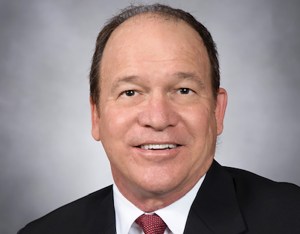Understanding Unwritten Lease Terms
Scott Biel of Solomon Ward Seidenwurm & Smith on how building owners can protect themselves against unnecessary litigation and damages.
In the current market, faced with the financial uncertainty of a lingering pandemic, rising inflation and deteriorating growth prospects, there is an unusually strong disparity between the business priorities of landlords and tenants. Tenants are seeking greater flexibility in their office and industrial space commitments, while building owners are naturally inclined to seek long-term leases—to access financing and for certainty that rising borrowing and operating expenses are covered.
This market paradox is being moderated to some extent by intermediary leasing activity: subletting by large corporate entities holding large reservoirs of improved space under long-term leases—an inverse flex-space model; and a growing number of entrepreneurial investors whose business is to develop capital improvements in long-term leased space for short-term licensing on a speculative basis.
In lease transactions between building owners and tenants acting as intermediary landlords, both parties are effectively in the same business, yet they are neither joint venturers nor competitors. Certain unwritten “implied” covenants and equitable concepts are deemed included in every contract and are particularly significant to such a relationship.
While some of these unwritten provisions can be expressly disclaimed or superseded in the text of the contract, courts retain discretion over the effectiveness of such modifications, while other implied terms are so fundamental that written terms will be interpreted as required to comply with them. Being aware of the effect of such unwritten terms can help protect the parties (and lenders) against unnecessary litigation and damages.
For the intermediary lease relationship, let’s consider the following unwritten lease provisions: the implied covenant of good faith and fair dealing, the implied covenant of quiet enjoyment and the equitable concept of restitution to avoid unjust enrichment, in the context of a tenant who leases “cold shell” space from the building owner to develop cleanroom facilities for speculative licensing to contract manufacturers.
Under such a lease, the tenant may invest substantially more of its own money than the value of the building shell on costs of building systems and infrastructure upgrades, in addition to the interior cleanroom improvements.
Acting in Good Faith
The risk of violating the implied covenant of good faith and fair dealing can occur early in such a relationship if the landlord has the discretionary right to approve the tenant’s leasehold improvements. The implied covenant requires the landlord to exercise such a discretionary right in good faith by not arbitrarily withholding such consent, or conditioning consent on additional improvements unrelated to the permitted use.
A less apparent violation of the implied covenant of good faith and fair dealing might be found in common casualty provisions of office leases that excuse the landlord from repairing damage caused by fire or other casualty when insufficient insurance proceeds are received to fully cover the cost of repairs.
If the reason for the shortfall is the right of the landlord’s mortgagee to apply insurance proceeds to the secured loan obligation and its election to do so, it might appear that a windfall opportunity has presented itself to the landlord: terminate the lease, capture the value of the improved building at no expense, and increase its rental income from leasing the improved building to another tenant.
What luck! Yet in the resulting litigation over the wrongful termination of the lease, the implied covenant of good faith and fair dealing will certainly become an issue. Did the landlord act in good faith to inform the tenant of the existing mortgagee’s right to apply insurance proceeds to the loan in lieu of funding the cost of repairs? For a loan made after lease execution, did the landlord act in good faith to negotiate terms of a loan agreement that didn’t provide protection against the risk of the tenant’s substantial loss upon lease termination? And regardless of the written terms of the lease, did the landlord act in good faith in not making the repairs despite the mortgagee’s failure to provide the insurance proceeds?
The litigation will likely raise additional unwritten lease provisions.
The implied covenant of quiet enjoyment protects a tenant against acts or omissions of the landlord (or anyone claiming through the landlord, including mortgagees) that interfere with the tenant’s use and possession of the leased premises. Such interference plainly results from the landlord’s failure to repair upon the mortgagee’s application of insurance proceeds to the outstanding loan obligation instead of to the cost of repairs. And the concept of equitable restitution might be read into the lease contract to avoid the landlord’s unjust enrichment.
If the casualty damage to the building is minimal, and the termination of the lease would provide the landlord with a windfall at the tenant’s expense, equity requires that the tenant be compensated for the value of the leasehold improvements to avoid unjust enrichment of the landlord.
Scott Biel is a partner at Solomon Ward Seidenwurm & Smith LLP. He is nationally recognized as an expert on the legal aspects of structuring and negotiating commercial leases and the acquisition, financing and development of commercial real estate projects.








You must be logged in to post a comment.